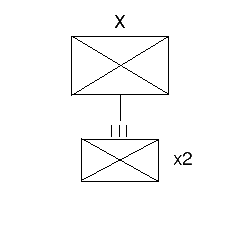![]() The Pacific War Online Encyclopedia
The Pacific War Online Encyclopedia
|
| Previous: Bridgeford, William | Table of Contents | Next: Briggs, H. Rawdon |

The brigade was the command echelon below the division and above the battalion in British and Commonwealth
armies. It corresponded to the regiment
in the Japanese and American armies, and closely
resembled an American regiment in its TO&E.
A brigade was commanded
by a brigadier, who was considered a field officer rather than a
general officer.
The brigade echelon was eliminated from most American divisions when they converted from a square structure (two brigades of two regiments each) to a triangular structure just before war broke out in the Pacific. The extra regiments left over after triangularization were usually organized into new divisions or broken up for cadre. 1 Cavalry Division was the only U.S division to retain the square structure during the war.
The Japanese also triangularized most of their divisions before war broke out. The three regiments in the triangular division were attached to an infantry group commanded by a major general, who was also the assistant division commander. (There was no rank between colonel and major general in the Japanese Army.) However, a number of Japanese divisions, including 5 Division in Malaya, retained the square structure well into the war. In some cases the infantry group of a triangularized division retained a brigade designation for some time after triangularization.
The brigades of the remaining Japanese square divisions were sometimes
temporarily detached for independent duty along with some of the
supporting elements of the division. These were known as mixed brigades. In addition, the Japanese Army organized a large
number of independent brigades, which typically consisted of about five
battalions with small artillery,
engineer, and signals units. When
reinforced with additional supporting arms, the brigade was known as an
independent mixed brigade, and often functioned like an understrength
division. Independent mixed brigades were first organized in 1937 for garrison and antiguerrilla duty in China, which required a sizable increase in the number of 20-year-olds drafted that year (from 22.9% of 20-year-olds, or 170,000 men, in 1937, to 44.4% or 320,000 men in 1938). The independent mixed brigades were later employed as shock troops, sometimes after being partially motorized. Some independent brigades were later redesignated as
divisions and brought up to division strength.
References
"Handbook of Japanese Military Forces" (1944-9-15)
The Pacific War Online Encyclopedia © 2008, 2010, 2014-2015 by Kent G. Budge. Index